Your hands show some of the first signs of aging
The color and texture of the skin on your hands change quicker than you think, which is why they are one of the body parts that reveal your age first. Keep these tips and tricks in mind to protect your hands from further damage and to make them appear younger.

Turn to SPF
Some people call those dark patches on your hands liver spots, but they have nothing to do with the vital organ—sun exposure is actually behind the discoloration. UV damage causes those harmless spots to pop up over the years, says Diane Madfes, MD, board-certified dermatologist and member of the American Academy of Dermatology. Even when people are in the habit of applying sunscreen every day, they tend to ignore their hands, leaving the area unprotected, she says. Give your hands a dose of SPF to prevent new age spots from forming. “You’re already putting sunscreen on your face—an extra dab on your hands will go a long way,” says Dr. Madfes. (Find out the sunscreen myths that dermatologists cringe.)
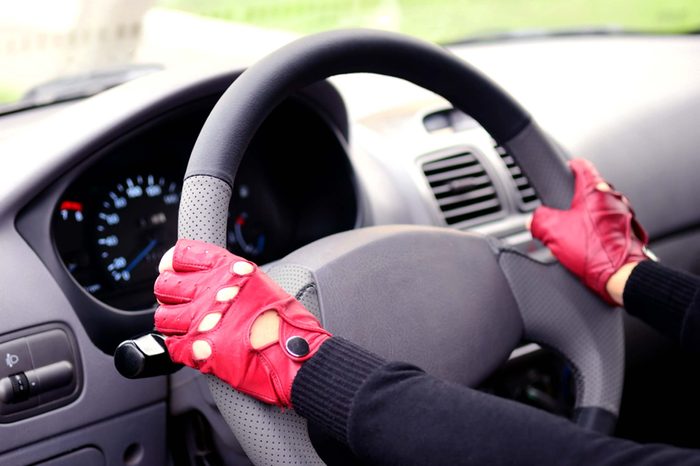
Slip on driving gloves
The law requires car windshields to have laminated glass with a plastic layer that blocks almost all UV rays. The windows on the doors, on the other hand, don’t have those same requirements, meaning those harmful rays are coming at you from the side. Even if you aren’t outside long, that time behind the wheel could leave your hands vulnerable to age spots, says Zakia Rahman, MD, clinical associate professor of dermatology at Stanford University and fellow of the American Academy of Dermatology. To keep spots at bay, she recommends getting your hands on a pair of driving gloves. “I used to slather sunscreen on my hands, but it would get on the wheel and get icky,” she says. Thick leather gloves are great for chilly winters, and a pair that airs your hands out with an opening in the palm will be comfortable in warm weather, she says.
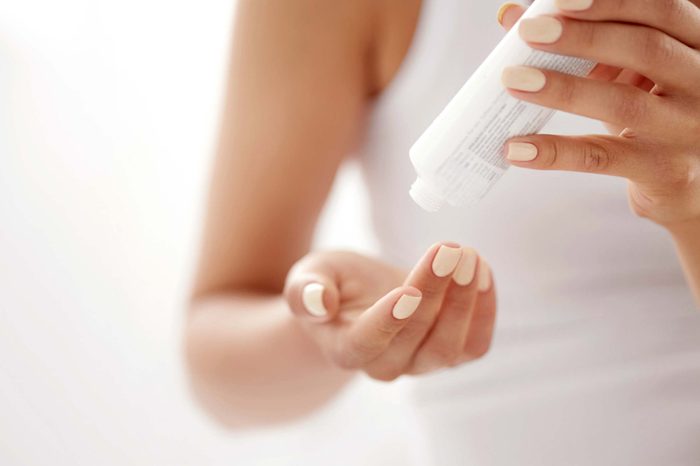
Try a chemical fix
Sure, sun protection can prevent more age spots from popping up, but they won’t get rid of any you already have. A prescribed or OTC hand cream with retinoid, vitamin C, hydroxyacids, or other antioxidants can help lighten the skin, says Dr. Madfes. You could also ask your dermatologist for a chemical peel, which uses an acid to remove the outer layer of the skin and make way for fresh skin.
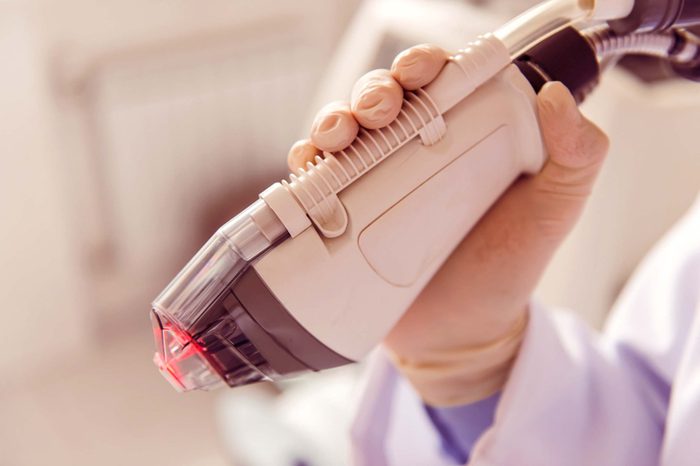
Get a laser treatment
For a fast fix for age spots, a laser is your best bet. “By the time people have brown spots, to get rid of them you need a little more aggressive of a treatment,” says Dr. Rahman. A dermatologist can use a Fraxel or Q-switch laser to get rid of the pigment, but you can also do it yourself with an at-home product like the Tria Age-Defying Laser, she says. Lasers are especially useful if your age spots look even more prominent from a condition called poikiloderma of Civatte, which leads to color loss in some areas of the skin, making hyperpigmentation even more noticeable, says Dr. Rahman. Intense pulsed light lasers are another option to ask your dermatologist about.
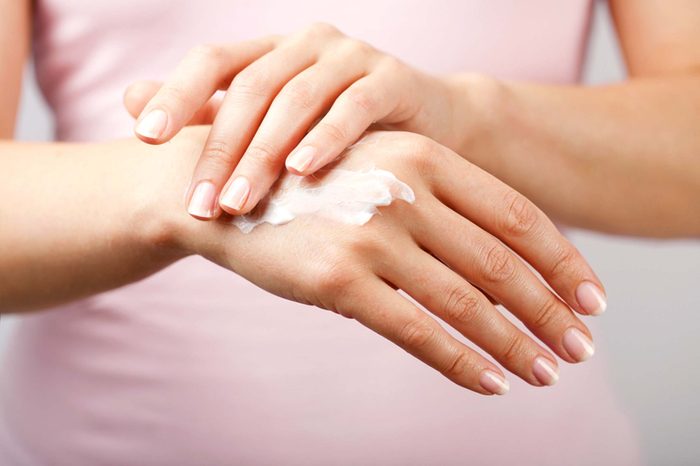
Add some volume
As you age, you lose fat—but not necessarily where you want it. The fat under your skin, including your hands starts to go away, leaving the veins underneath more prominent, and the skin looking saggier. You can bring collagen levels back up with a hand cream that contains growth factors, or head to the derm’s office for a fat or filler injection, says Dr. Madfes. “A little bit of a filler substance between the skin and tendons and blood vessels will give more of a cushion,” she says.
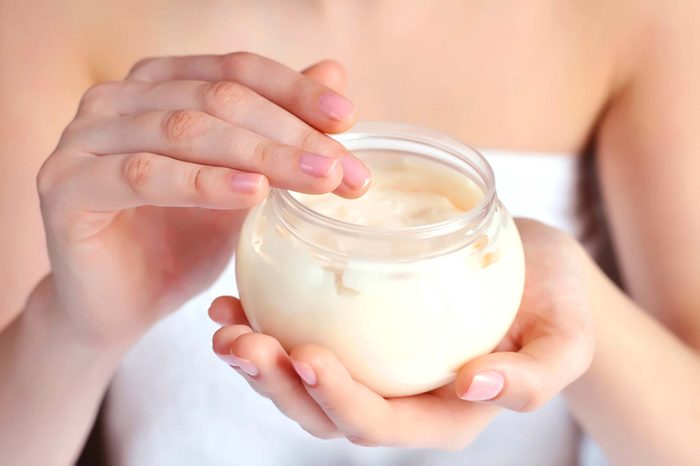
Choose a better moisturizer
If you slather on hand lotion but still have dry, scaly patches aging your hands, check the ingredient label. Dr. Rahman recommends looking for moisturizers with dimethicone to help seal in water and glycolic acid to plump up the skin. “Ones that help plump up the skin and hydrate the skin will make your skin look better,” she says. “Others do that temporarily, but these do longer-term.” You could also try one with omega-3s and linoleic acid, which are fatty acids that make your skin look more youthful, or lipids to keep natural moisture from escaping, says Dr. Madfes. Opt for creams that contain ingredients like hyaluronic acids, ceramides, and oat extract to protect, hydration and plump.
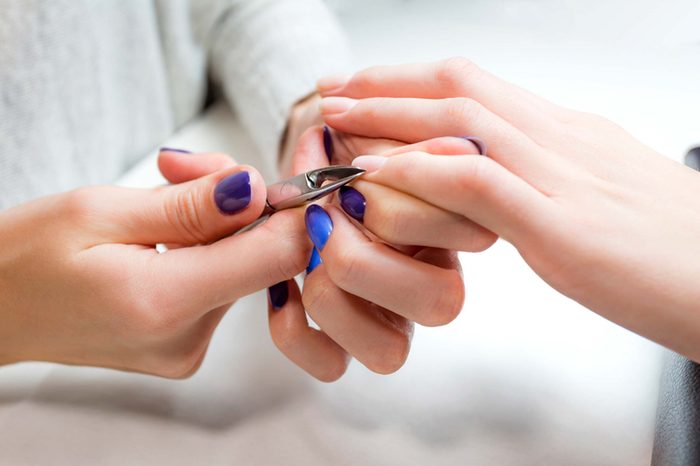
Say no to cutting cuticles
Ragged cuticles won’t give your hands the youthful smoothness you’re looking for. “A lot of that is from repeated trauma, whether in the workplace, or from picking,” says Dr. Madfes. By keeping the skin around your nails soft, you’ll make your whole hand look younger. At the nail salon, tell the manicurist not to remove the skin’s barrier by cutting the cuticle, and just moisturize the skin instead, says Dr. Madfes. And don’t cut cuticles because it increases the risk of finger infection. Find out what your manicurist is really thinking about you.

Remove calluses
Constant friction on your hands can leave calluses on your hands, so wear gloves during sports to prevent them from forming. If you already have a thick callus, get a salicylic acid plaster over the counter or by prescription, says Dr. Rahman. “Apply to that area, remove the next morning, and gently rub with a pumice stone,” she says.
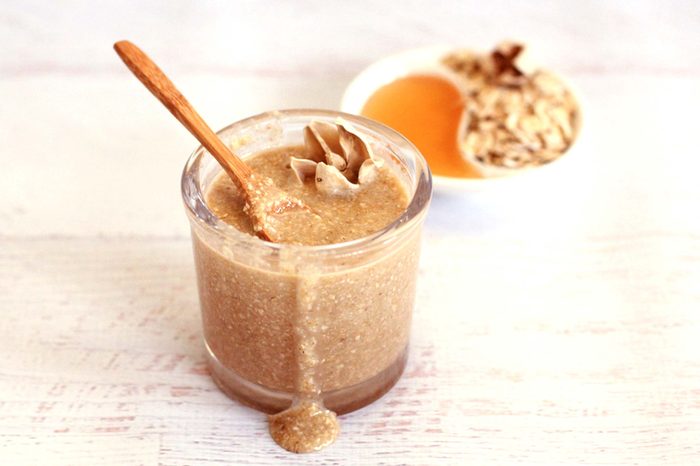
Exfoliate more
Buffing away old skin cells becomes even more important as you get older. “As we age, our exfoliation slows down,” says Dr. Madfes. She recommends a using a chemical peel or retinoid product to help replace the tired, dead cells with fresh ones. Just make sure you avoid these exfoliation mistakes, which can ruin your skin.